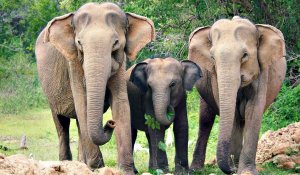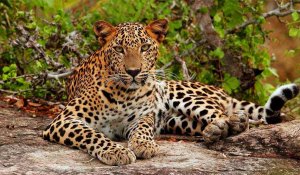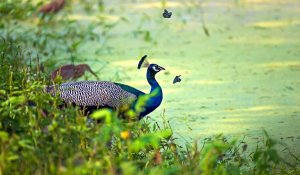Yala National Park contains five blocks, with the two south-eastern coastal blocks being the most frequently visited by the public. The park is also connected to adjoining wildlife sanctuaries and national parks, the largest of which is the Lunugamvehera National Park. Overall, Yala covers an area of 979 square kilometres that hosts a variety of different ecosystems, ranging from jungles to freshwater wetlands, that makes it an ideal home for several species of wildlife.
The Wildlife in Yala
Yala is home to more than 200 species of birds and 40 species of mammals, but it is probably most well-known for its leopard population. There are more leopards per unit of land in Yala than almost anywhere else in the world, and the park is considered to have far more leopards sightings than any other national park on the island. It is best to visit between January and July to increase your chances of spotting these magnificent creatures.
Elephants can also be spotted at Yala, but the possibility of sighting them varies throughout the season. This is because Lunugamvehera National Park acts as a natural corridor between Yala and Udawalawe National Park, which the elephants use to move between habitats. Your best chance of spotting them is during the dry season, between May and August.
Yala is also home to crocodiles, peacocks, monkeys, sloth bears, water buffalo, wild boar, deer and golden jackals. Around 130 different species of birds have also been recorded in the park, including pelicans, storks, herons and flamingos.








